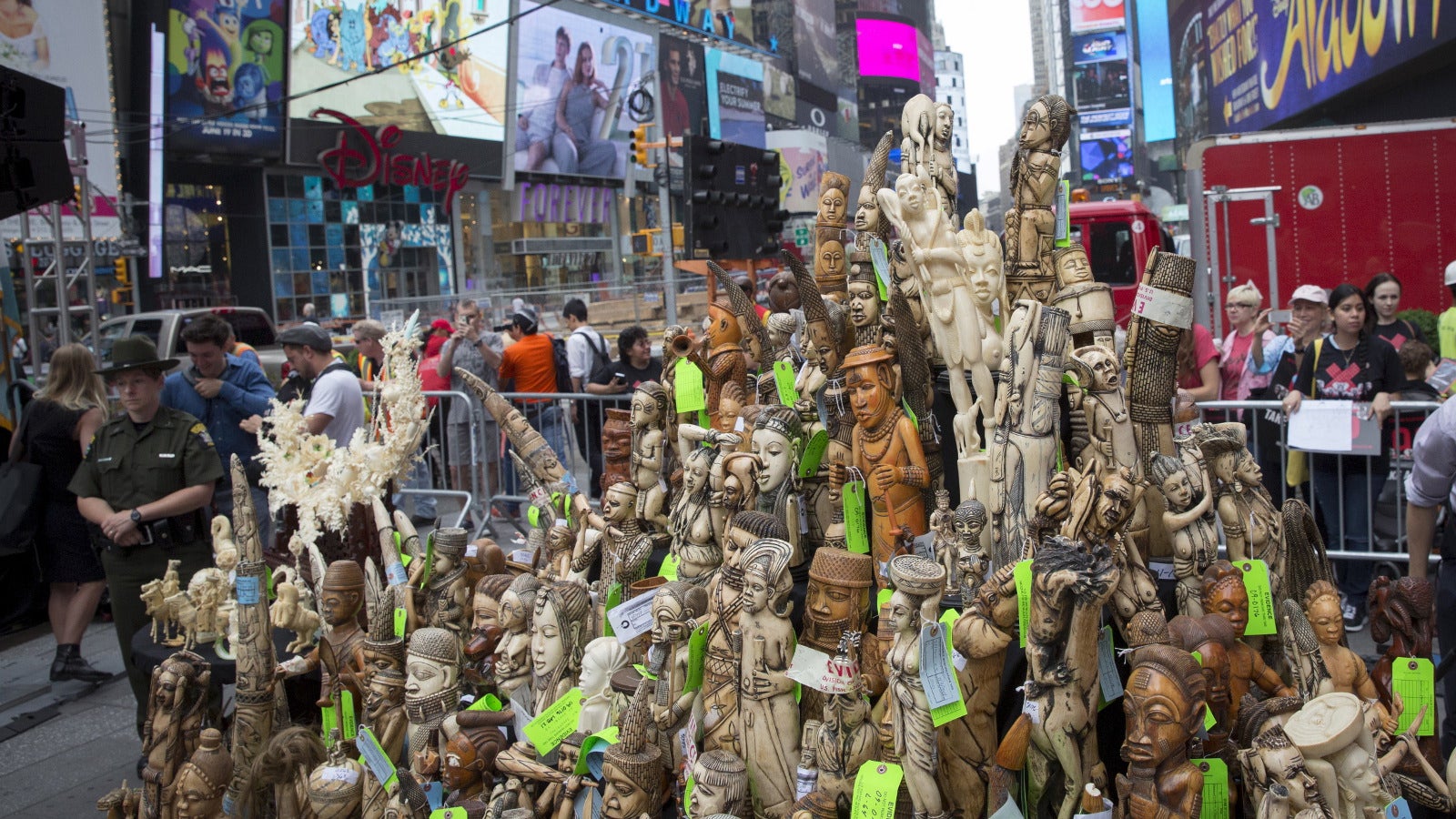Watch: The US destroyed a literal ton of illegal ivory in Times Square
Tusks carved with African motifs, trinkets silhouetted with the shapes of tigers or Chinese men, and ornamented jewelry–one ton of confiscated ivory items in total—was turned to dust Friday, June 19 in the middle of New York City’s iconic Times Square.


Tusks carved with African motifs, trinkets silhouetted with the shapes of tigers or Chinese men, and ornamented jewelry–one ton of confiscated ivory items in total—was turned to dust Friday, June 19 in the middle of New York City’s iconic Times Square.
Most of the material destroyed had been seized from Victor Gordon, the owner of an antique shop in Philadelphia and a prolific ivory smuggler. His collection of elephant ivory, one of the largest such collections in the US, was worth around $1 million. A federal judge once called his case “one of the most egregious incidents in US trafficking history;” Gordon is currently serving a 30-month prison sentence.
The US Fish and Wildlife Service (FWS), the government agency that coordinated the Times Square demonstration, believes that as long as illegal ivory exists, there will be poachers and buyers like Gordon willing to sell it. The logic behind destroying ivory, therefore, is that the only way to destroy the black market is to literally destroy all available stock. Other countries including Kenya, Philippines, China, France, and Belgium have also destroyed confiscated ivory. (Other specialists, however, have argued that ivory scarcity can generate more demand, creating an incentive for criminals to kill more elephants.)
A continued problem, at home and abroad
The New York City crush comes three weeks after China, the world’s biggest ivory market, announced that it would eventually phase out its (legal) manufacturing and ivory trade. Experts say the trade provides cover for illegal poachers and merchants.
This is the second time the US government has crushed such a large amount of ivory. In 2013, six tons were reduced to dust near a warehouse in Denver. But crushing the ivory in one of country’s most symbolic crossroads sends a clear message: we are all part of the problem. Indeed, the US remains the second largest market for ivory, after China.
Aware of the problem, President Barack Obama’s administration has pushed for a “near total ban” on the domestic ivory trade that would only allow the sale or purchase of certified antiques. Although not yet implemented, Interior Secretary Sally Jewell tells Quartz she is confident the new restrictions will be freed from their bureaucratic red tape “soon.”
Still, time is running out for the majestic mammals. An estimated 96 elephants are slaughtered in Africa every day for their ivory: about one animal every 15 minutes. Recent census data conducted by Tanzania and Mozambique revealed both countries have lost more than half of their elephant populations in the last five years. The poaching industry also supports criminal organizations like the Lord’s Resistance Army in Uganda, the Janjaweed in Sudan, and al-Shabab, al Qaeda’s arm in Somalia.